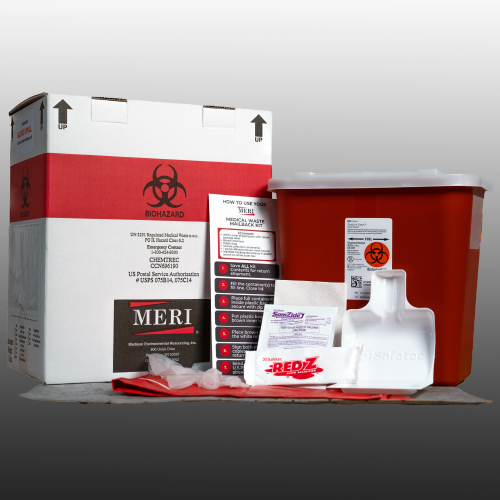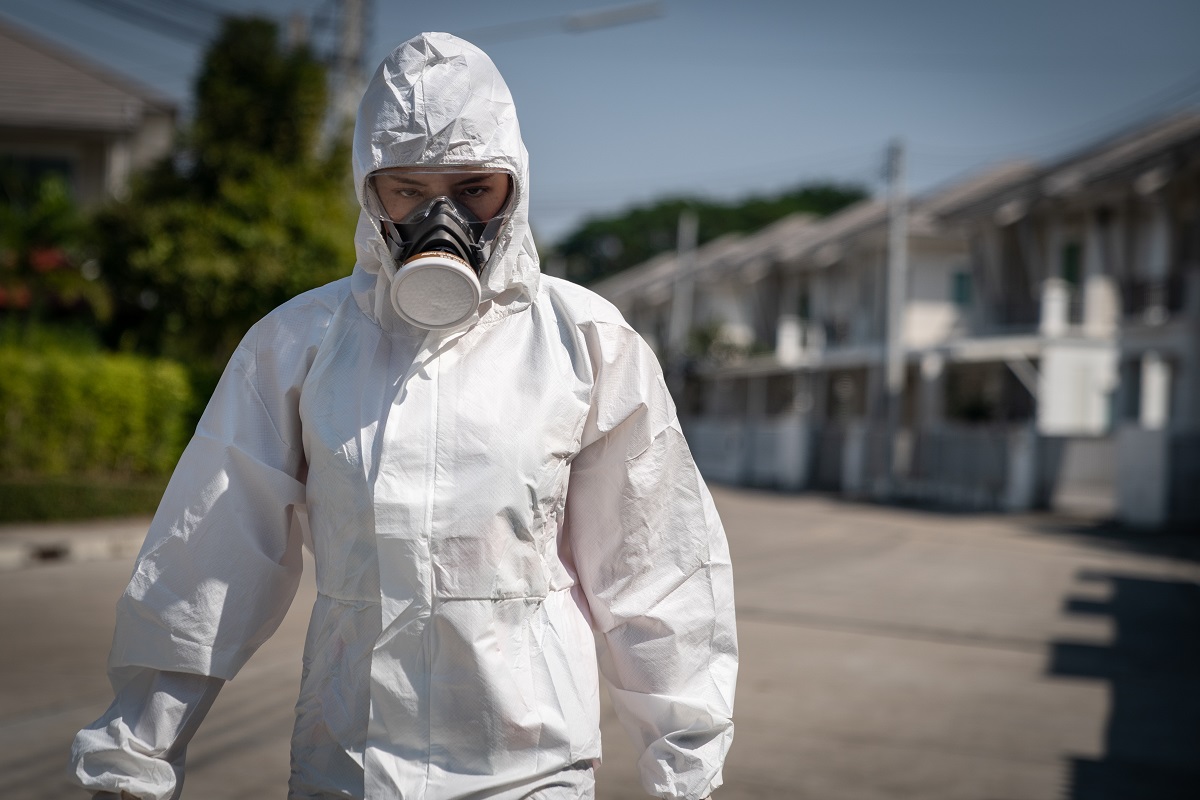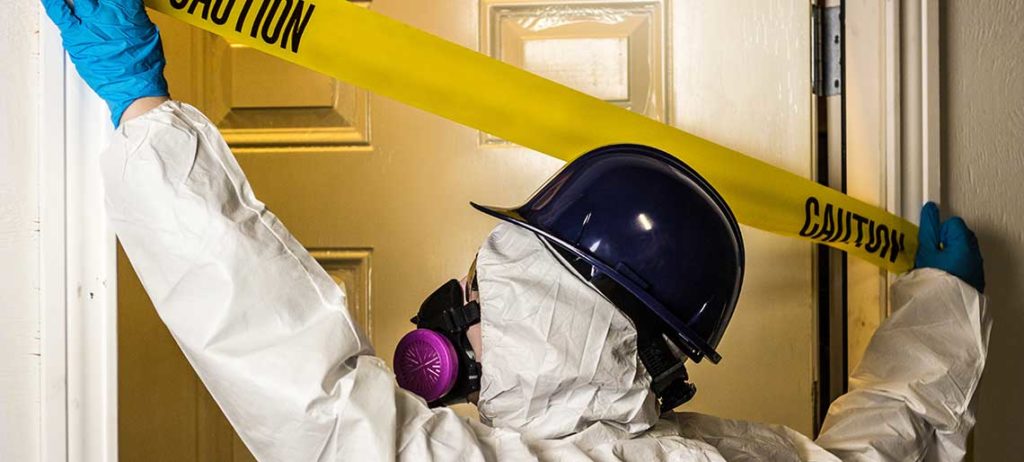Sewage Cleanup Solutions: Fast and Safe Remediation of Contaminated Locations
Specialist Biohazard Clean-up for Criminal Activity Scenes, Trauma Incidents, and Infected Rooms
In the world of specialist biohazard cleaning, thorough focus to detail and adherence to safety methods are paramount. When faced with the consequences of a criminal offense scene, injury incident, or any type of contaminated room, the importance of proper clean-up can not be understated. The intricacies and dangers connected with biohazards call for customized expertise and knowledge to guarantee reliable removal. As we dig into the complexities of biohazard cleanup for these delicate settings, a deeper understanding of the obstacles and crucial treatments involved will certainly arise, dropping light on the indispensable function of specialist cleanup services in recovering safety and security and satisfaction.

Significance of Biohazard Clean-up
Biohazard cleaning adhering to crime scenes and trauma incidents is essential for making sure the safety of individuals and the setting. When these incidents happen, they commonly leave a range of biohazards such as blood, bodily fluids, and various other possibly infectious products. These materials can nurture unsafe pathogens like bacteria and viruses, posing major health and wellness threats otherwise properly cleaned up and sterilized.
Expert biohazard cleaning solutions are trained to deal with these harmful products securely and successfully. They have the essential tools, such as individual safety gear and specialized cleaning agents, to thoroughly sanitize the impacted areas. By turning over the cleanup to skilled professionals, people can avoid exposure to hazardous pathogens and avoid the spread of contagious illness.
Moreover, correct biohazard cleanup is crucial for shielding the atmosphere. Improper disposal of biohazardous products can contaminate dirt, water resources, and air, positioning a hazard to wildlife and the environment. By complying with rigorous clean-up protocols, experts can ensure that biohazards are safely gotten rid of and disposed of based on guidelines, decreasing the danger of ecological contamination.
Types of Biohazards Encountered
Different hazardous materials commonly come across in crime scenes and injury events existing substantial health and wellness threats if not dealt with appropriately. Blood and bodily fluids are among the most common biohazards located in these circumstances.
An additional kind of biohazard typically experienced is sharp items like needles, broken glass, and various other things that can trigger injuries and send infections. Chemical dangers are also a concern, as criminal activity scenes may include materials like tear gas, pepper spray, or medicine manufacturing products that call for specific handling and disposal treatments to stop additional harm.
Furthermore, mold and mildew and germs development can happen in spaces where decomposition or long term exposure to dampness has occurred. These bacteria can release contaminants and allergens right into the air, presenting respiratory threats to those subjected. On the whole, biohazard clean-up professionals should be qualified and well-appointed to efficiently take care of these various kinds of hazardous products to ensure the security of themselves and others.
Tools and Protective Equipment
When addressing the critical task of managing biohazards run into in crime scenes and trauma incidents, the usage of proper tools and safety gear is paramount to ensuring the safety of individuals entailed in the clean-up procedure. Specialized cleansing tools like biohazard sharps, bags, and anti-bacterials containers are necessary for the safe collection and disposal of contaminated products. Guaranteeing that all equipment is correctly kept, regularly checked, and used according to safety and security guidelines is essential in reducing the threat of exposure to biohazards throughout clean-up procedures.
Clean-up Refine and Methods
Efficient and thorough clean-up of biohazardous products from criminal activity scenes and injury events needs thorough interest to detail and adherence to rigorous security protocols. The cleanup process usually entails numerous vital actions.
Adhering to the elimination of biohazardous products, the damaged location goes through a detailed cleansing and sanitation procedure. This action includes using specialized cleaning up agents and equipment to ensure that all traces of contamination are eradicated. After cleaning, the location goes through strenuous screening to verify that it is totally free and safe of any remaining biohazards.

Decontamination and Disposal Procedures
To guarantee complete purification and correct disposal of biohazardous products, complying with the thorough clean-up process, certain treatments must be thoroughly adhered to with stringent adherence to security procedures. Decontamination involves the removal or neutralization of impurities to reduce the danger of exposure and spread of dangerous substances. This procedure commonly includes cleaning, disinfecting, and disinfecting the afflicted area making use of specialized equipment and EPA-approved chemicals.
Once purification is completed, proper disposal of biohazardous materials is crucial to stop additional contamination or harm. Biohazardous waste, such as blood-soaked products or bodily fluids, need to be thoroughly collected, packaged, and identified according to regulatory guidelines. ATP testing. These products are then transported to accredited facilities for disposal with appropriate networks, making sure compliance with local, state, and government guidelines

Verdict
Finally, expert biohazard cleaning is critical for guaranteeing the efficient and risk-free elimination of hazardous materials from criminal activity scenes, injury events, and contaminated rooms. By making use of specialized tools, safety equipment, and adhering to correct cleaning processes and techniques, biohazard clean-up groups can properly get rid of and sanitize of biohazards, decreasing the threat of exposure and harm to individuals and the environment.
As we delve right into the complexities of biohazard clean-up for these sensitive environments, a much deeper understanding of the obstacles and important treatments included will certainly arise, losing light on the indispensable duty of expert clean-up services in recovering safety and security and tranquility of mind.
Specialist biohazard cleanup services are educated to deal with these harmful materials safely and efficiently. By following strict cleaning methods, professionals can guarantee that biohazards are safely removed and disposed of in conformity with laws, lessening the risk of ecological contamination.
In general, biohazard cleaning specialists need to be fully equipped and experienced to effectively take care of these different types of harmful materials to make certain the security of themselves and others.
When attending to the vital task of handling biohazards experienced in criminal activity scenes and trauma cases, the usage of correct devices and protective equipment is critical to making certain the security of individuals included in the cleanup procedure.